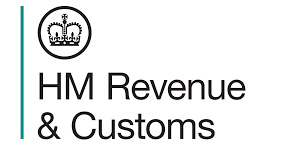HMRC SDLT: Shared Ownership Lease Conditions for SDLT Relief: Qualifying Bodies and Rights Explained
Shared Ownership Leases and SDLT Relief Conditions
Shared ownership leases can benefit from special Stamp Duty Land Tax (SDLT) treatment if they meet certain conditions outlined in FA03/SCH9. Although the term “shared ownership lease” isn’t specifically defined in SDLT legislation, these leases must adhere to specific criteria to qualify for relief. This includes being granted by a qualifying body or under a preserved right to buy, and providing exclusive use of a dwelling to the lessee.
- The lease must be granted by a qualifying body such as a local housing authority, housing association, or the Greater London Authority.
- Qualifying bodies also include the Northern Ireland Housing Executive and private registered providers of social housing.
- Leases granted under a preserved right to buy involve lessors against whom the right to buy is exercisable under the Housing Act 1985.
- The lessee must be the qualifying person for the purposes of the preserved right to buy.
- The lease must provide the lessee exclusive use of the dwelling.
- Further conditions may apply based on the lease’s detailed terms, as outlined in additional guidance.
“`

Read the original guidance here:
HMRC SDLT: Shared Ownership Lease Conditions for SDLT Relief: Qualifying Bodies and Rights Explained
Understanding Shared Ownership Leases in SDLT
What is a Shared Ownership Lease?
A “shared ownership lease” is a type of lease that allows individuals to purchase part of a property while renting the remaining portion. Although the term isn’t specifically defined in Stamp Duty Land Tax (SDLT) legislation, certain criteria must be met to qualify for the special treatment of shared ownership leases under the Finance Act 2003, Schedule 9 (FA03/SCH9).
Conditions for Shared Ownership Leases
To qualify as a shared ownership lease under the provisions of FA03/SCH9, the lease must meet the following general conditions:
1. Granting Authority:
– The lease must be granted by one of the qualifying bodies or as part of a preserved right to buy.
2. Qualifying Bodies:
– These bodies include:
– Local housing authority
– Housing association
– Housing action trust
– Northern Ireland Housing Executive
– Homes and Communities Agency
– Greater London Authority (when carrying out housing or regeneration duties, or new town and urban development functions)
– Development corporations established under the New Towns Act 1981
– Private registered providers of social housing that are not classified as housing associations.
3. Preserved Right to Buy:
– A lease can also fall under the category of shared ownership if it is granted in line with a preserved right to buy. To qualify as such:
– The landlord (lessor) must be someone with whom the right to buy can be exercised according to Part 5 of the Housing Act 1985, specifically by virtue of section 171A.
– The tenant(s) (lessee(s)) must qualify for the preserved right to buy.
– The lease must pertain to a qualifying dwelling that the tenant is eligible to purchase.
Exclusive Use of the Dwelling
In addition to the above conditions, the shared ownership lease must meet one important requirement:
– Exclusive Use:
– The lease must grant the lessee or lessees exclusive use of the dwelling. This means that only the lessee(s) should have the right to occupy the property, ensuring privacy and control over the living space.
Additional Conditions for Shared Ownership Leases
Depending on the specific terms of the lease, further conditions may apply. These detailed rules can be found in a related guidance document, specifically [SDLTM27030](https://stampdutyadvicebureau.co.uk/hmrc/SDLTM27030), which outlines the precise implications and requirements of shared ownership leases.
Examples of Shared Ownership Leases
Below are some practical instances that illustrate how shared ownership leases operate:
1. Example 1: Local Authority Lease:
– A local housing authority grants a shared ownership lease for a three-bedroom flat. The tenant buys a 50% share of the property while paying rent on the remaining 50%. The lease complies with all conditions, so it qualifies as a shared ownership lease under the SDLT rules.
2. Example 2: Housing Association Involvement:
– A tenant is living in a property managed by a housing association. They have a preserved right to buy based on their previous agreement. The housing association provides them with a shared ownership lease allowing them to purchase a 30% stake in the property, with a rental agreement for the other 70%. This arrangement meets the criteria for shared ownership lease relief.
3. Example 3: Preserved Right to Buy:
– A lessee has a preserved right to buy from a development corporation due to their long-term rental arrangement. The lessee purchases a quarter of the dwelling, which fulfills the necessary conditions and is therefore treated under SDLT as a shared ownership lease.
Implications of Qualifying for Shared Ownership Leases
Understanding whether a lease qualifies as a shared ownership lease has significant implications for Stamp Duty Land Tax:
– Reliefs Available: If the conditions for shared ownership leases are fulfilled, the lessee could benefit from applicable reliefs on SDLT, which can lead to substantial savings.
– Application Process: Lessees must ensure that the correct paperwork and details are submitted when applying for the shared ownership lease relief to take advantage of the benefits.
Conclusion: Navigating Shared Ownership Leases
Navigating the world of shared ownership leases can be complex, but understanding the key conditions and criteria is vital to ensuring that the right benefits are claimed. Lessees looking to take advantage of shared ownership arrangements should always check the details of their lease carefully and may find it beneficial to consult with a professional if there are any uncertainties. For specific conditions and detailed guidance, refer to resources such as [SDLTM27030](https://stampdutyadvicebureau.co.uk/hmrc/SDLTM27030) which provide further information on shared ownership leases.







